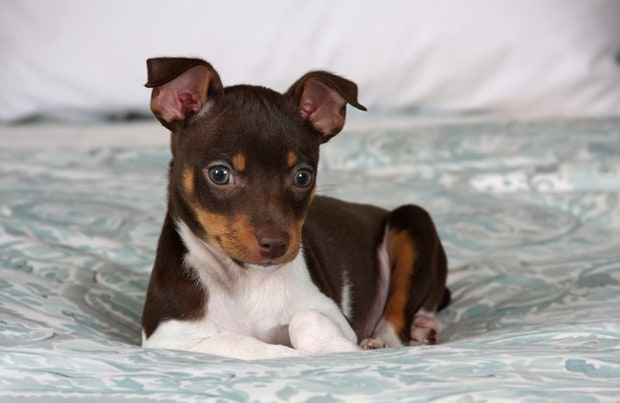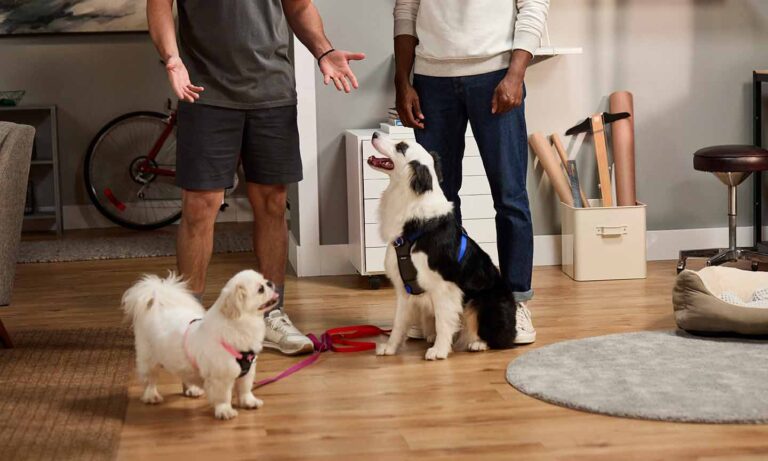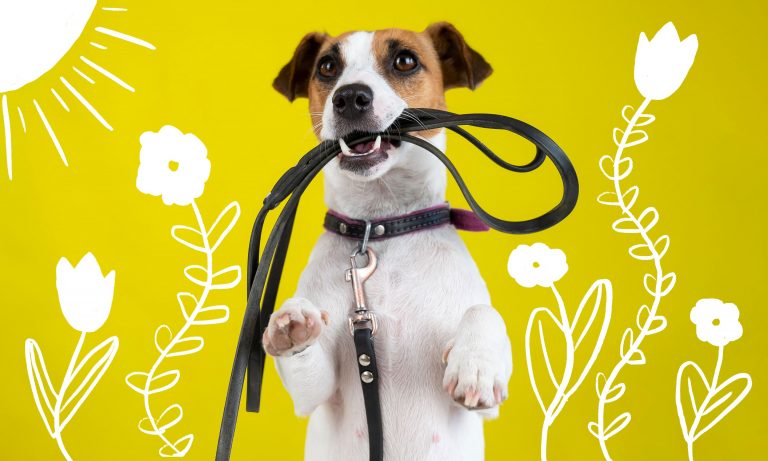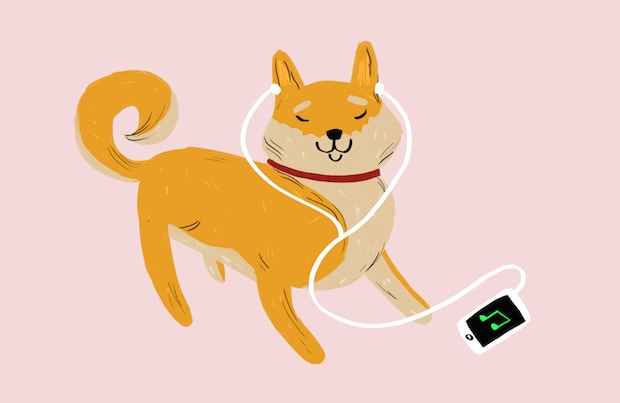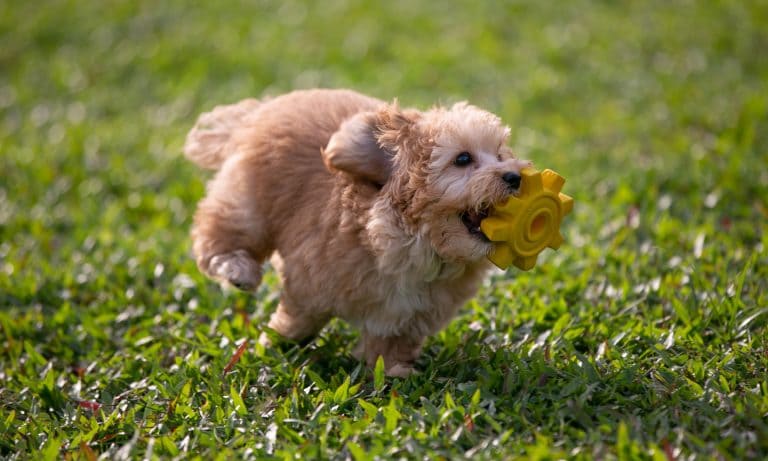From gnawing on shoes to acts of puppy mischief, it can seem like our dogs are always finding a way to get into something. Convinced your dog may be the only one? Fortunately, the experts at the American Kennel Club are here to share the 10 most mischievous breeds and provide tips for keeping your particularly playful pup entertained. See if your breed made the list.
Pyrenean Shepherd
Developed in the French Pyrenees Mountains as a herding dog, the Pyrenean Shepherd covered up to 25 miles each day with their shepherds, with just two dogs being responsible for flocks of 1,000 sheep. In addition to their work in the hills, Pyrenean Shepherds were used as war dogs in WWI and were known for being “the most intelligent, cunning, able and fastest” among all the breeds used, according to the officer in charge of war dogs. Needless to say, this breed loves to work and is very active.
“If a Pyrenean Shepherd is not involved in the day’s activities, they can think up very creative ways to get themselves involved,” said AKC spokesperson Lisa Peterson.
Affenpinscher
This fun-loving breed is known for its mischievous personality and impish face and nature of a monkey—with the name Affenpinscher translated from German as “monkey terrier,” according to Peterson. One of the oldest toy breeds in existence, the breed was also referred to as “a little devil with a moustache” in Central Europe where it was developed. Because of their size, the Affenpinscher can easily live in an apartment but will require plenty of indoor play and daily walks to meet their energy needs and activity level. Their wiry coat should be brushed several times a week.
Tibetan Terrier
An excellent companion known for being highly intelligent and somewhat mischievous, Tibetan Terriers were bred and raised in monasteries by lamas, or Buddhist priests, almost 2,000 years ago. According to Peterson, the breed was treasured by the lamas, who kept them as companions, watchdogs and good luck charms in addition to being herding and retrieving dogs. Independent and active, Tibetan Terriers like to do their own thing, sometimes.
If your dog beats to the tune of his own drum a little too much for your liking, Mary Burch, director of the AKC’s Canine Good Citizen program, recommends providing your dog with plenty of exercise to help them relax and focus on their training in addition to being mindful of not reinforcing behaviors you don’t like.
“Reinforcing behaviors you don’t like is very common, and you might not even realize you’re doing it,” Burch explained. “Petting and playing with a puppy that jumps on you will more likely than not ensure that he’ll continue jumping because you’re giving him the attention he wants. Instead, wait until he’s not jumping to pet him.”
Lhasa Apso
An independent breed that likes to please itself above its master at times, the Lhasa Apso is joyful, dignified and aloof. They excel at activities that provide a challenge, such as agility, and like to stay busy. Because they served as watchdogs of Tibetan nobles and Buddhist monasteries hundreds of years ago, Lhasa Apsos can be suspicious of strangers and require early socialization.
Burch recommends consistently rewarding actions you like in training with dog treats, toys and praise to encourage your dog to keep up the good behavior. Managing your environment to help them succeed is also important. “If you keep your shoes in the closet, your dog can’t make a snack out of them,” she shared.
Siberian Husky
Known for its amazing endurance and willingness to work, the Siberian Husky was bred in Northeast Asia as a sled dog, according to Peterson. Used as a part of the army’s search and rescue unit during WWII and as sled dogs for the All-Alaskan Sweepstakes, a 408-mile long race, Siberian Huskies require plenty of daily exercise to maintain its energy level and keep it from getting into mischief. The breed’s agreeable nature and outgoing personality makes it a great all-around dog in addition to its skill pulling a sled.
Havanese
The only breed of dog native to Cuba, the Havanese is a small dog with a friendly disposition. It evolved from its role as a pampered lapdog of Cuban aristocracy to a family companion, watchdog and child’s playmate, according to Peterson. Although they are small, the Havanese is an energetic breed and requires some daily exercise to keep it out of trouble.
Rat Terrier
Sturdy and compact, Rat Terriers are companion dogs that can also be used to eradicate rodents and vermin both above and below ground. While useful, those skills for investigating good smells can lead to mischief, Peterson said. Loyal and active, Rat Terriers love being a part of the family and their playful nature lends them to excel in agility and obedience training, which can be excellent outlets for exercise.
Schipperke
Originally from the Flemish regions of Belgium, the Schipperke was developed to work as a companion of tradesman as well as a watchdog and ratter on river barges.
“Known as the ‘Little Captain,’ the Schipperke wants to be involved in everything going on around it and isn’t afraid to tell its owners how it feels through barking,” Peterson said.
Small and foxlike, Schipperkes are known for their mischievous expressions and distinctive black coat. Enthusiastic and willful, the breed requires exercise in a fenced-in area and early obedience training.
Irish Water Spaniel
Known as the clown of all the spaniel breeds, the Irish Water Spaniel is always thinking of creative and interesting ways to complete even the smallest of tasks, Peterson said. Active and intelligent, this sporting breed has a natural instinct to please its owners but requires plenty of regular exercise to keep it well behaved.
Both indoor and outdoor dog toys can help make playtime exciting for your mischievous pup while wearing them out. Burch suggests using balls to teach your dog motor skills and retrieving while providing lots of exercise and chew toys to help with teething and strengthening your dogs face and neck muscles.
Puli
Developed as a sheepdog in Hungary, the Puli has an excellent sense of humor and retains its “puppy” attitude throughout its entire life, Peterson explained.
“Vigorous and alert, the Puli is a tough-as-nails herding dog, able to perform its duties across any terrain and conquer any obstacles in its bath, which can lead to some mischievous behavior,” Peterson said.
Keep your playful pup engaged at home during the day with squeaky toys and interactive toys, including puzzles, to stimulate your dog’s mind and body. Interactive toys also keep your dog busy and can help reduce separation anxiety, according to Burch.

Jessica spends her days trying not to helicopter parent her beloved shelter pup, Darwin.
Share:
